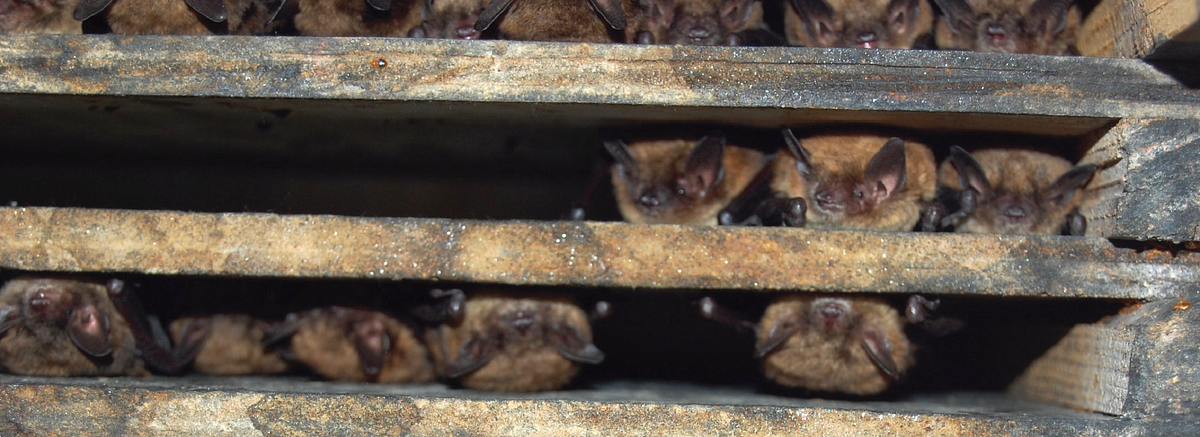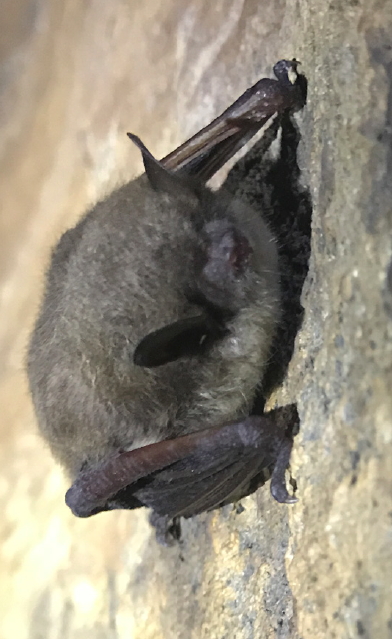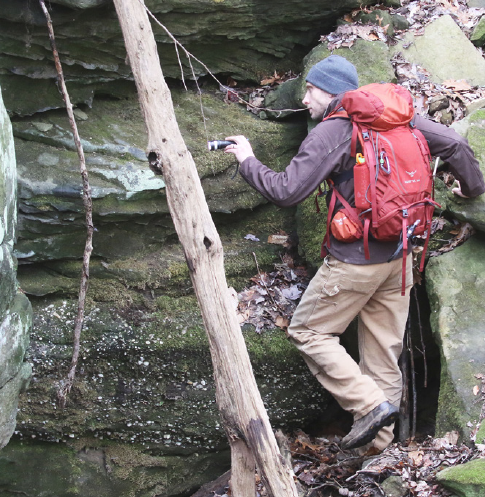Marlo Perdicas, Park Biologist

Our Summit Metro Parks are home to some of the most interesting Ohio bat species, such as the endangered Indiana bat and the threatened northern long-eared bat. If you like a splash of color, eastern red bats or the largest Ohio chiropteran, the hoary bat, might catch your eye. Bats use our parks in the winter for hibernation and in the summer to forage and raise their young in trees or structures like barns or bat houses.

At Summit Metro Parks, we’ve been focused on bat ecology and conservation for two decades — but studying our favorite flying mammals has continued to change. Before the introduction of the invasive fungus that causes White Nose Syndrome, a deadly disease that causes death in bats during hibernation, park biologists studied bats inside caves throughout Summit County. Biologists also studied bats during the summer by capturing them in mist nets, collecting biological data, then releasing them back into the forest.
White Nose Syndrome has been present in Ohio for nearly a decade. When it first arrived, nearly 100 percent of bats that encountered the fungus during hibernation did not survive the disease. As we have continued to study bats, we are beginning to observe them utilizing new strategies to survive, and biologists are intrigued and excited to watch these new behaviors develop among bat species.
Summit Metro Parks biologists have worked closely with Ohio Division of Wildlife and Ohio University over the past two winters to monitor bat populations during hibernation. We have discovered that bats are finding new locations to hibernate, seeking shelter in places where the White Nose Syndrome fungus isn’t present.

The fungus requires the cool, damp recesses of caves to survive; typically, the same places bats would sleep the winter away. Now, many bats are moving close to cave entrances where the temperature is colder and there is more light. This is harder for the bats, but it beats succumbing to the disease. Even more interesting is that some bats, particularly big brown bats, have moved away from caves altogether and are using rock outcroppings and the nooks and crannies of cliff faces to overwinter.
Silver-haired bats and small-footed bats have also been found in similar locations, and even in rock piles. Until last year, we didn’t even realize these two species hibernated in Ohio at all! We have continued to learn many new, fascinating things about bats during our long-term study of their ecology.
When White Nose Syndrome entered the United States in 2006 and Ohio in 2011, many scientists thought the demise of bats was imminent. The changes we have noted in their behavior give us hope that bats will persist, and their populations will slowly recover.
Summit Metro Parks biologists look forward to continuing their study of these important creatures into the future.
For more great stories like this, check out Green Islands Magazine, a bi-monthly publication from Summit Metro Parks. Summit County residents can sign up to receive the publication at home free of charge.